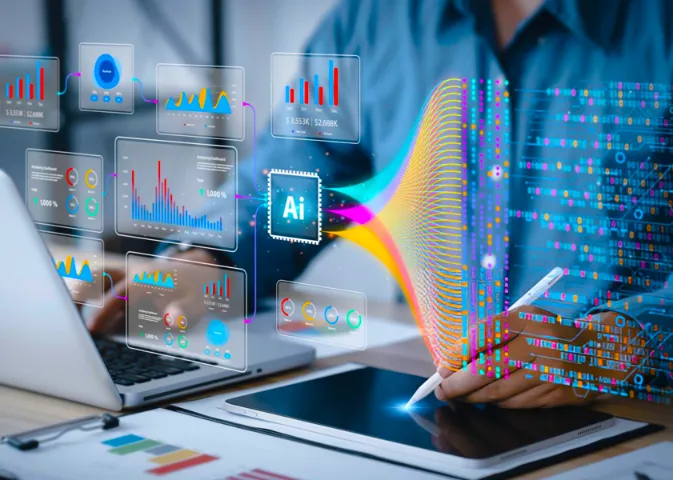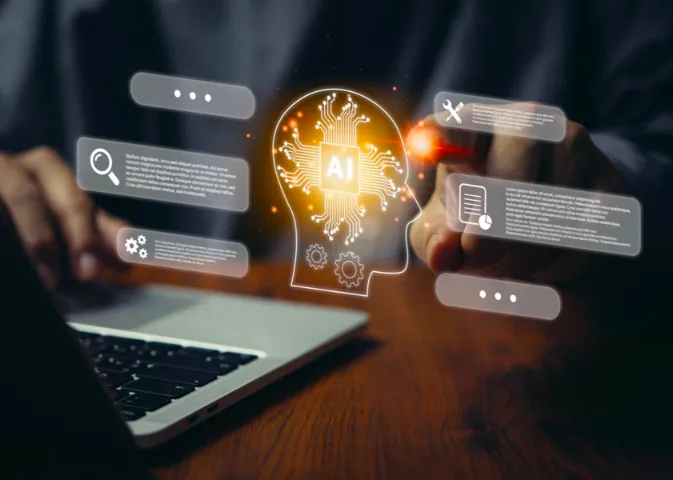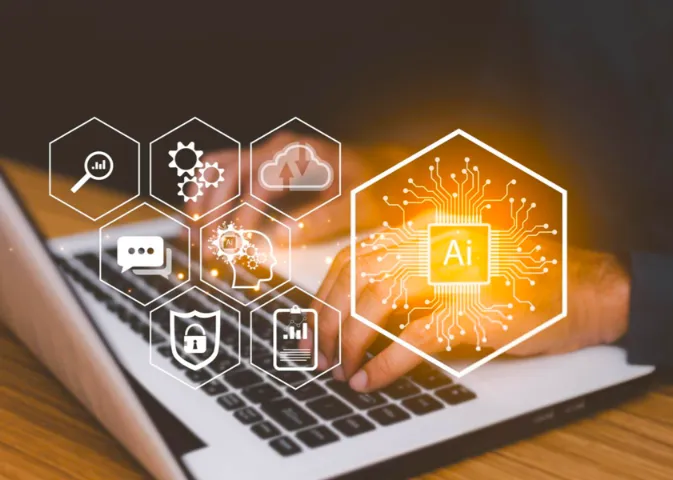Home / Blogs / 5 Ways Generative AI Will Change How Your Product Team Operates in 2025
5 Ways Generative AI Will Change How Your Product Team Operates in 2025

Overview
The role of product teams has always been about balancing vision with execution to understand user’s needs, align cross-functional teams, prioritise features, timely launch, and continuous learning. But in 2025, these teams are not just building faster but smarter. The reason? Generative AI.
What once existed as a futuristic concept is now a major part of how top-performing teams operate. Whether it’s speeding up ideation, writing specs, or synthesizing research, Generative AI is no longer just a tool but a team player. So, if your product team isn’t already using it, you’re not just lagging but also missing out on a major opportunity to innovate, align, and execute better.
This blog explores the 5 ways in which Generative AI will transform the way your product teams work and why embracing it is no longer just an option. Come, let’s dive in!
What Is Generative AI?
Generative AI can be defined as a type of artificial intelligence crafted to create original content – text, images, code, ideas, and even product specifications by learning from large datasets. In contrast to conventional AI, which solely concentrates on analysis and forecasting, generative AI generates results. It has the ability to draft a user story, write a feature description, brainstorm use cases, or summarise customer interviews – all with a single prompt.
For the product teams, this unwinds an entirely new dimension of capability. It results in faster execution, fewer manual tasks, and better decision-making – powered by AI that acts more like a creative collaborator than just another tool. It’s like having an ever-present team member who knows your product, your users, your backlog, and your business context.
And in 2025, it’s not just about using these tools. It’s about how well your team integrates them to acquire a competitive edge. To achieve this, let’s now explore the ways Generative AI is already changing the product game.
Want to future-proof your product team? Avatu’s Generative AI solutions help you ideate faster, align better, and deliver smarter.
5 Ways Generative AI Will Transform Your Product Team in 2025
From planning to post-launch, Generative AI is transforming every corner of the product development cycle. The following are the top 5 ways in which it is reshaping the way product teams operate in 2025
1. Faster Product Ideation with Generative AI Brainstorming

Traditionally, coming up with new product suggestions demanded lengthy whiteboard sessions, team meetings, and customer surveys. In 2025, Generative AI has cut short that cycle dramatically. With just a few basic inputs such as target audience, business objective, or user problem – AI can instantly generate:
- Product feature ideas
- MVP outlines
- User flows
- Competitive differentiators
Want suggestions for improving onboarding in a fitness app? Just prompt the AI, and you’ll get 10 creative, data-backed options to discuss within minutes.
Why it matters?
Well, with Generative AI, ideation becomes less about guesswork and more about smart starting points. It allows the teams to move faster from concept to prototype – with more time left for testing what actually matters.
2. Automated User Research Synthesis

User research is supreme, but sifting through hours of interviews and survey data is tedious. With Generative AI, you can upload transcripts or data files to get:
- A summarized report of user insights
- Common pain points and patterns
- Suggested personas
- Quotes tagged by theme or emotion
Some tools even provide sentiment analysis and heat maps that visualise what users care about most.
Why it matters?
With Generative AI, research doesn’t get lost in spreadsheets. Teams can instantly surface the “why” behind user behaviours, enabling smarter decisions and stronger user empathy.
3. Smarter Spec Writing and Documentation

Product specifications often fall victim to either being too vague or too time-consuming. With Generative AI, one can go from concept to detailed documentation in a fraction of the time. Begin with prompting the AI with a feature idea like: “Write a PRD for a referral system in a shopping app.” Within seconds, it will help generate:
- Feature descriptions
- User stories and flows
- Acceptance criteria
- Technical dependencies
- Edge cases and success metrics
You may review, refine, and collaborate on the output – all without starting from scratch.
Why it matters?
Generative AI helps teams stay aligned. Engineers, designers, and stakeholders work from clear documentation, reducing back-and-forth and accelerating development cycles.
Stuck in manual workflows and messy docs? Avatu streamlines specs, research, and collaboration using Generative AI.
4. Enhanced Team Communication and Alignment

Misalignment usually kills momentum. Generative AI helps teams stay aligned by improving the way they communicate across tools and time zones. It helps:
- Summarize meetings in real time
- Generate follow-up tasks with owner assignments
- Draft stakeholder updates and progress reports
- Translate specs or discussions into Jira, Slack, or Notion-ready formats
No more “Who’s doing what?” or “When did we decide that?” as AI keeps everyone informed and accountable.
Why it matters?
Generative AI leads to less time invested in meetings and more time invested in building. This, in turn, helps teams move in sync with fewer silos and smoother handoffs.
5. Continuous Optimization Through Generative AI Experimentation

Shipping a product isn’t the end of the process but the beginning. With AI, teams can now optimise features post-launch with automated experimentation. Here’s what it looks like:
- AI suggests A/B test variants (UI, copy, layout)
- Sets up experiments based on user behaviour
- Monitors results in real-time
- Recommends which version to scale or tweak for the next test
Want fresh headings for a landing page? The AI drafts 10. Not sure which user journey works best? The AI runs tests and shows the winner.
Why it matters?
With Generative AI, optimization becomes continuous and scalable, powered by data, not guesswork. It also allows the teams to learn faster and improve products in real-time.
Why Generative AI Will Be Essential for Product Teams in 2025?
In 2025, product development is no longer about working harder – it’s about working smarter, faster, and more collaboratively. And this is exactly where Generative AI shines bright because:
- Speed is Survival: AI allows teams to go from idea to output in minutes, not days – giving you a serious edge in rapidly evolving markets.
- Smarter Insights, Less Noise: With data all around, AI filters the fluff and delivers the insights that truly matter so you act faster and smarter.
- Leaner Teams, Bigger Impact: Whether you’re short on resources or headcount, artificial intelligence picks up the slack, handling repetitive tasks so your team can concentrate on strategy.
- Real-Time Alignment: From meeting summaries to instant status updates, AI keeps cross-functional teams in alignment without endless calls or emails.
- AI-Native Era: Your competitors are already making use of artificial intelligence to ship better products faster. To keep up with this means embedding AI at the core and not on the sidelines.
In a nutshell, the teams that embrace Generative AI will move faster, think bigger, and stay ahead of the competition.
Conclusion
The future of product development is here, and it is powered by Generative AI. From faster ideation to smarter specifications, automated research, and real-time optimisation, AI is no longer a supporting tool but is becoming a core team member. Moreover, product teams that embrace this transition are expected to outpace the rest in speed, clarity, and innovation. But, effectively using AI demands more than just tools – it takes strategy, integration, and the right partner.
This is where Avatu Private Limited enters the scenario. With cutting-edge solutions and in-depth industry insights, we empower product teams to embed Generative AI smoothly into your workflows, boosting productivity, alignment, and results.
Is your product team ready to lead in the AI-driven era or risks failing behind? Partner with Avatu Private Limited today and take the next step towards success.
Is Your Product Team Ready for the AI-Driven Future? Stay ahead with Avatu - your partner in smarter, faster, AI-first product delivery.
Frequently Asked Questions
Generative AI allows product teams to input basic details like target audience or user pain points and receive instant feature ideas, MVP outlines, and user flows. This significantly cuts down on time spent in brainstorming sessions and gets teams moving faster from idea to prototype.
Instead of manually analysing hours of interviews or survey data, Generative AI can summarize transcripts, extract key insights, and identify common patterns or emotions. It even suggests user personas and surfaces trends to support data-driven decisions.
AI tools can generate comprehensive product specs, including feature descriptions, user stories, edge cases, and success metrics, all based on a simple prompt. This streamlines the documentation process, ensures consistency, and helps teams align faste
Yes, it can summarize meetings, generate follow-up tasks, draft updates for stakeholders, and convert decisions into tool-friendly formats (like Jira or Slack). This ensures everyone is on the same page without long email threads or repeated syncs.
The adoption of Generative AI is crucial for product teams in 2025 because teams that integrate AI will innovate faster, operate leaner, and collaborate more efficiently. With competitors already leveraging AI to ship better products, adopting it isn’t a nice-to-have, it’s essential for staying ahead.
